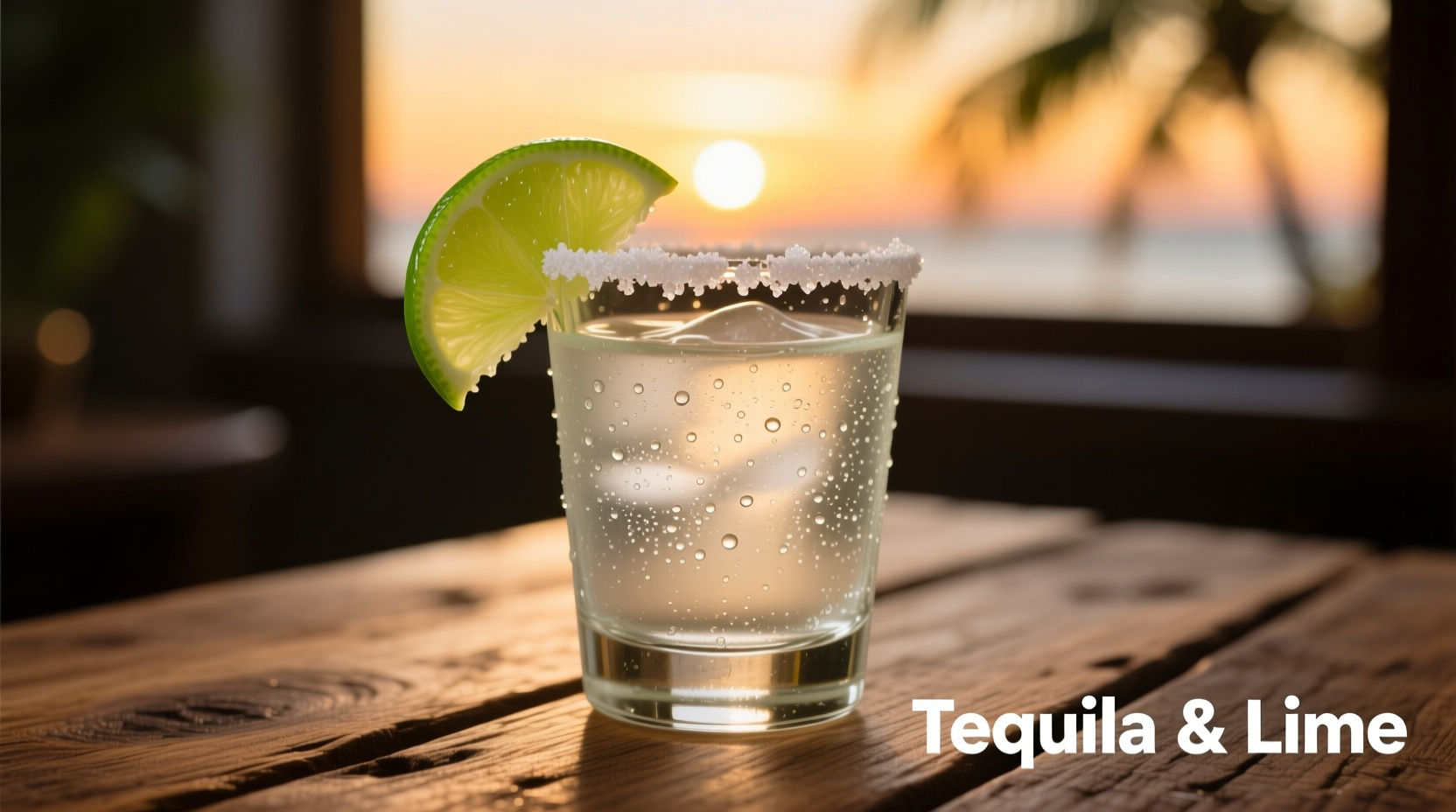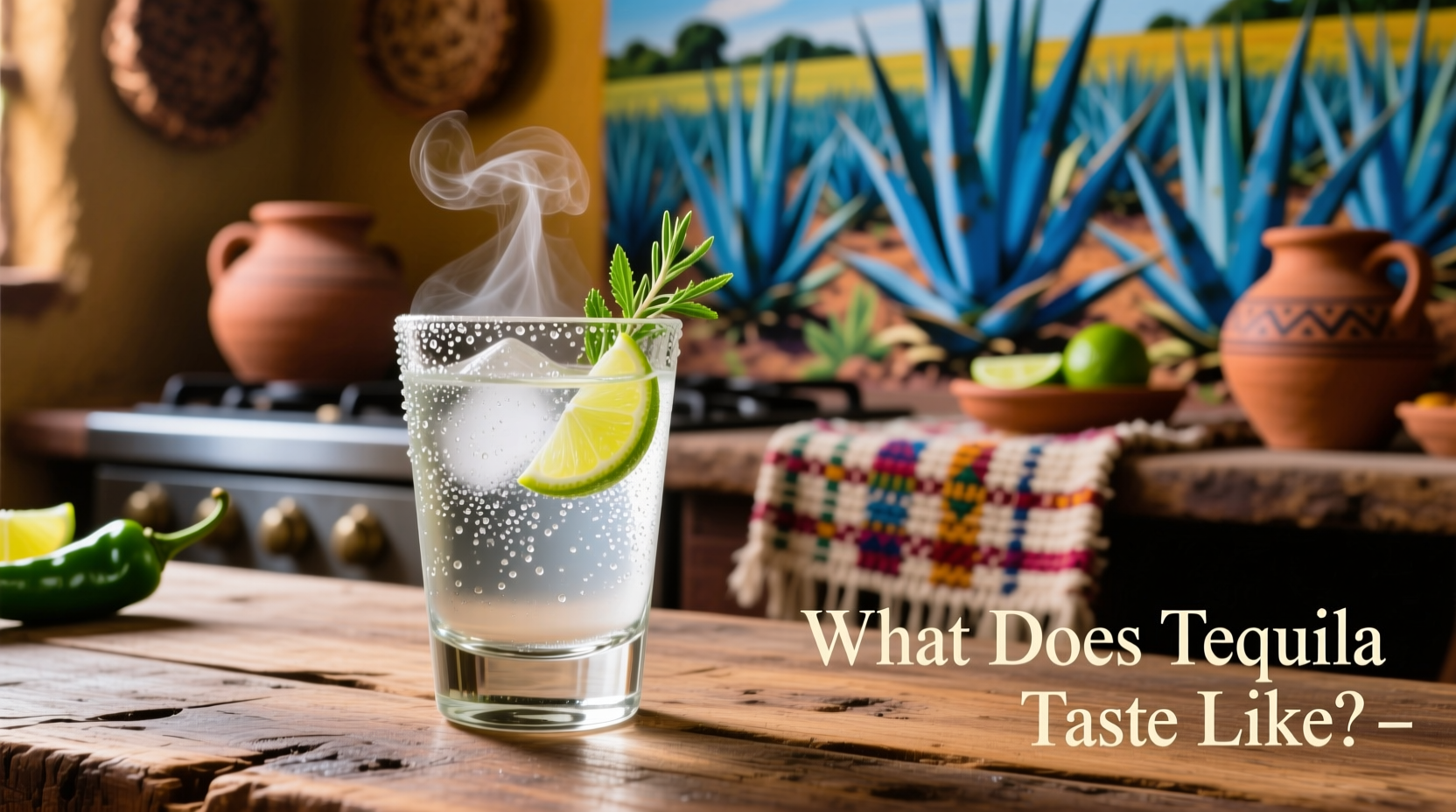Understanding Tequila's Core Flavor Profile
When you sip quality tequila, you're experiencing the essence of the blue Weber agave plant transformed through careful production. Unlike vodka or gin which aim for neutrality, tequila proudly showcases its botanical origins. The foundation of tequila's taste comes from the piña (agave heart), which develops complex sugars during its 6-8 year growth cycle in Mexico's volcanic soils.
Professional tasters identify several consistent flavor notes across quality tequilas:
| Flavor Category | Common Notes | Primary Source |
|---|---|---|
| Agave Character | Cooked pear, roasted pepper, honey | Natural sugars in mature agave |
| Earth & Mineral | Wet stone, clay, herbal | Volcanic soil terroir |
| Citrus | Lemon zest, grapefruit, lime | Distillation process |
| Spice | Black pepper, cinnamon, anise | Natural compounds in agave |
How Production Methods Shape Tequila's Taste
The journey from agave plant to bottle involves decisions that dramatically impact flavor. According to the Tequila Regulatory Council's standards (NOM-006-SCFI-2012), authentic tequila must contain at least 51% blue agave sugars, though premium expressions use 100%.
Two key production variables affect taste:
Traditional vs. Modern Processing
Tequilas made using traditional hornos (stone ovens) develop deeper caramelized agave flavors compared to those processed in autoclaves (industrial steamers). Master distillers at Casa Herradura note that slow oven roasting over 36-72 hours creates more complex flavor compounds than rapid steam processing.
Distillation Techniques
Double distillation in copper pot stills preserves more agave character than column still distillation. The "cut" points during distillation—when heads, hearts, and tails are separated—determine how much of tequila's natural flavor remains. Premium producers take narrower cuts to maintain purity of flavor.

Tasting Different Tequila Categories
Tequila's classification system directly correlates with flavor development. Understanding these categories helps predict what your tequila will taste like:
Blanco (Silver) Tequila
Unaged or aged less than two months, blanco tequila showcases the purest expression of agave. Expect vibrant citrus notes, fresh pepper, and distinct herbal qualities. Highland region blancos often display sweeter, fruitier profiles, while lowland varieties tend toward earthier, more mineral characteristics—a distinction documented in sensory analysis studies by the University of Guadalajara.
Reposado Tequila
Aged 2-12 months in oak barrels, reposado develops subtle wood influence while maintaining agave prominence. You'll notice vanilla, butterscotch, and light caramel notes complementing the core agave flavor. American oak barrels impart different flavors than French oak, creating regional variations in taste profile.
Añejo Tequila
With 1-3 years of aging, añejo tequila transforms into a sophisticated spirit with rich caramel, chocolate, and baking spice notes. The agave character becomes integrated with the oak influence, creating layered complexity. Master distillers at Herradura observe that añejos develop distinctive dried fruit notes after 18 months of aging.
How to Taste Tequila Properly
Tequila's flavors reveal themselves best when approached methodically:
- Temperature matters: Serve blanco slightly chilled (12-15°C/54-59°F) to enhance crispness; serve aged tequilas at room temperature to release complex aromas
- Use the right glass: A snifter or copita concentrates aromas better than a shot glass
- Observe color: Blanco should be crystal clear; añejos develop amber hues from barrel aging
- Swirl and smell: Note initial agave notes followed by secondary aromas
- Sip slowly: Let the tequila coat your palate to identify flavor progression
Regional Flavor Differences
Tequila's Denomination of Origin recognizes two primary growing regions, each producing distinctive flavor profiles:
- Highlands (Los Altos): Sweeter, fruitier tequilas with citrus and floral notes due to red clay soil and higher elevation
- Lowlands (Valles): Earthier, more robust expressions with pronounced herbal and mineral characteristics from volcanic soil
This terroir effect is scientifically documented in chemical analyses published by the Tequila Interchange Project, which found measurable differences in flavor compounds between regional productions.
Common Misconceptions About Tequila's Taste
Several myths persist about tequila's flavor profile:
- "All tequila tastes harsh": Quality 100% agave tequilas are smooth and complex; harshness typically indicates lower-quality mixto tequilas with added sugars
- "Tequila always causes bad hangovers": Pure tequila contains no added sugars or artificial flavors that contribute to hangovers; impurities in lower-quality products are the real culprits
- "Aged tequila is always better": Aging isn't inherently superior—it creates different flavor profiles. Many connoisseurs prefer blancos for their pure agave expression
Tequila Tasting Quick Reference
When evaluating tequila, professional tasters follow this progression:
- Initial aroma: What's the first scent that hits your nose?
- Entry flavor: What tastes register immediately on your palate?
- Middle development: How does the flavor evolve across your tongue?
- Finish: What lingering notes remain after swallowing?
Quality tequila should display balance between agave character, alcohol warmth, and any additional flavor elements from aging.











 浙公网安备
33010002000092号
浙公网安备
33010002000092号 浙B2-20120091-4
浙B2-20120091-4